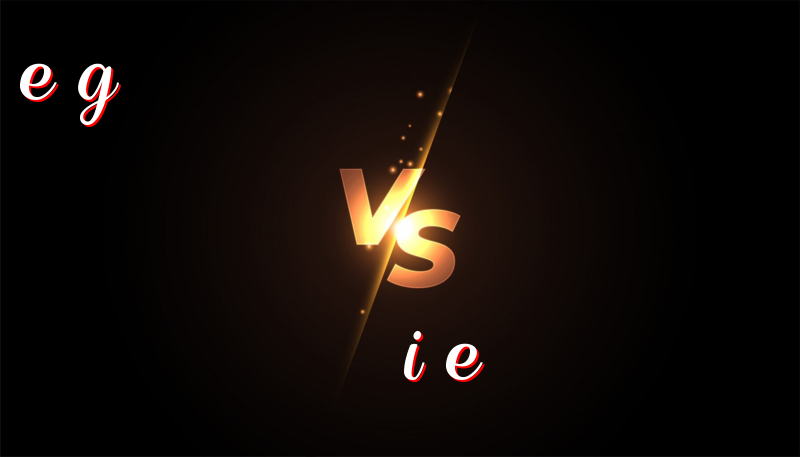Understanding the Difference Between EG and IE
Understanding E.G. and I.E.
Learning the difference between “e.g.” and “i.e.” can be tricky. But it does not have to be! Let’s break it down in easy words.
History
“E.g.” comes from Latin words “exempli gratia,” which means “for example.”
“I.e.” comes from Latin words “id est,” which means “that is” or “in other words.”
How to Use Them
E.G.
Use “e.g.” when you want to give some examples. Think of it as saying “for example.”
Examples of “e.g.”:
- I like fruits, e.g., apples, bananas, and cherries.
- We saw many animals at the zoo, e.g., lions, tigers, and bears.
- She loves to read books, e.g., adventure, mystery, and fantasy.
- He enjoys outdoor sports, e.g., football, basketball, and baseball.
- They visited many cities, e.g., Paris, London, and Rome.
I.E.
Use “i.e.” when you want to explain something more clearly or in a different way. Think of it as saying “that is” or “in other words.”
Examples of “i.e.”:
- She has one hobby, i.e., painting.
- We will meet at the central park, i.e., the big park near the museum.
- He has one pet, i.e., a brown dog.
- They only believe in one rule, i.e., honesty.
- He is afraid of only one thing, i.e., spiders.
Trick to Remember the Difference
Think of “e.g.” as “example given” to remember it means “for example.”
Think of “i.e.” as “in essence” to remember it explains something in more detail.
Summary
So, use “e.g.” to give examples and “i.e.” to explain something more clearly. Remembering these simple tips can help you use them correctly!

Leave a Reply
You must be logged in to post a comment.